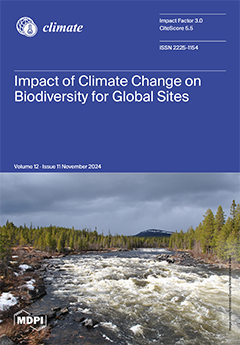The socio-cultural leadership system in rural communities of developing countries is generally gender-biased, thus rendering female-headed households (FHHs) vulnerable to climate change risk. This study explored the factors influencing FHHs’ adoption of a climate change adaptation strategy (CCAS) in Chivi District, Zimbabwe. We
[...] Read more.
The socio-cultural leadership system in rural communities of developing countries is generally gender-biased, thus rendering female-headed households (FHHs) vulnerable to climate change risk. This study explored the factors influencing FHHs’ adoption of a climate change adaptation strategy (CCAS) in Chivi District, Zimbabwe. We used a multistage sampling technique and logistic regression to evaluate 107 women household heads’ livelihood and their decision to adopt the CCAS in Ward 25 of the Chivi District. The results show that the age of the female head significantly influenced the CCAS decision (
R2 = −0.073), along with marital status (
R2 = 0.110), agricultural training (
R2 = 0.133), club membership (
R2 = 0.084), and farm size (
R2 = 0.014). Access to formal agricultural training plays a prominent role. At the same time, the institutional framework showed variations and laxity on the part of the local government, as access to extension services varies significantly. In addition, education level was reported to have an insignificant (
p = 0.098) influence on CCAS adoption. Overall, multiple institutional and socio-economic factors are essential in influencing CCAS decisions. Hence, central and local governments are encouraged to improve outreach strategies on deploying supporting tools, extension agents, and vital stakeholders for strategic information dissemination to sensitize rural dwellers and community leaders on women’s and FHHs’ crucial role in food security and their resilience to climate change risk. Moreover, the educational syllabus can be enhanced at all rural education levels to reshape the norms of future generations against the customary impact of old age on farming approaches and to encourage women’s participation in decision making and interventions, particularly those sensitive to their societal contributions.
Full article





